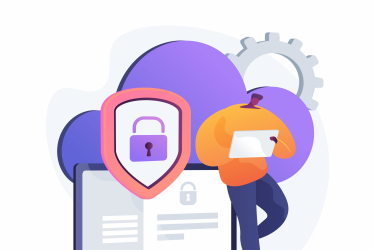Insights
Government Innovation Series: Adapting Innovation Canvases with UBR and Algemene Bestuursdienst
The Centre for Innovation, together with its partner Uitvoeringsorganisatie Bedrijfsvoering Rijk (UBR), is designing and implementing an open ‘government innovation methodology’ to develop processes and tools that help innovators evolve rough ideas to proven concepts. To support investment decisions for innovation projects, we tested the Lean Canvas with senior government managers of the Algemene Bestuursdienst (ABD) – a collective of top civil servants in the Netherlands.
One of the Centre’s goals is to support our partner organisations to implement a productive innovation methodology. In the past ten years, innovation methodologies have gained momentum: many organisations have set up tools (e.g. the Business Model Canvas), toolkits (e.g. Mozilla’s Open Innovation Toolkit), process guides (e.g. the Humanitarian Innovation Guide that we have developed with ELRHA), and methodologies (e.g. Design Thinking). In the realm of government, these frameworks have also taken off, for instance, the OECD OPSI Toolkit Navigator demonstrates the wealth of supportive materials out there. The challenge for us, as an innovation organisation, is not to add to existing resources, but to identify the best available and to help our partner organisations successfully navigate their options.
Government Innovation Series
Alongside UBR, the Centre for Innovation is working on a number of initiatives to encourage government innovation. From the outcomes of the collaboration so far, we have developed an extensive toolkit for organisations to use to innovate. The toolkit prepares organisations to respond to societal developments through innovation and is packed full of tools, guides, and methods to encourage such processes. The contents of the toolkit can support organisations from problem identification to identifying a plausible solution. It has multiple tools for each step in the process: (1) to analyse problems and contexts; (2) generate ideas; (3) validate solutions. Moreover, the toolkit also offers comprehensive plans for suggested workshops to facilitate implementation of the tools.
Go to the Innovation Toolkit (opens in a new tab).
In the Government Innovation Series, the Centre for Innovation will focus on highlights from the project. This article zooms in on how we adapted existing innovation canvases to work in government contexts. Interested in finding out more about government innovation? Read our article on implementing design thinking in the public sector.
The need for risk-aware innovation investment
If you work in the public sector, you are probably aware that governmental expenditure on innovation projects is not taken lightly. Public money needs to be accounted for and when it does not result in a tangible return on investment, individuals risk being held accountable. The absence of guaranteed results is inherent to innovation to begin with, and therefore problematic. With UBR—a significant operational support provider to government ministries and agencies for services including HR, IT, and interim/change management—CFI is supporting innovation boards to make better decisions when investing in innovation. This will reduce the risk of investing in non-effective solutions.
A second obstacle when innovating in governmental contexts, is that innovation projects are talked about in ‘normal project language’. They focus on deliverables, timelines, risks, and so on. An innovation project manager (or investor), however, is more interested in whether a solution is fit-for-purpose or what the added value for the people using the solution will be. In start-up spaces, ‘canvases’ are used to create an interface between an innovation team and their stakeholders. A canvas reflects the latest status of key aspects of the innovation project, for example the problem the innovation is supposed to solve or how to engage with a user’s day-to-day workflow. You might know (as mentioned above) Osterwalder’s Business Model Canvas (BMC), but in the past years we’ve seen a wide range of canvases emerge: from Regime Change Canvasand Social Business Model Canvas to a User Manual for Me Canvas.
Turning Lean Canvas into a Government Innovation Canvas
To help government innovation managers overcome these two obstacles in innovation we set out to transform the lean canvas into a Government Innovation Canvas. This new canvas should include all the information essential to them when talking about innovation thus enabling them to make better decisions when investing in innovation and help them focus on the problem solution fit. A specific canvas for (Dutch) government innovation still doesn’t exist. To find out what information is essential to public sector innovation projects, we developed an experiment to test a canvas with potential end-users. We took the Lean Canvas (as found at LeanStack.com) as a starting point, because of its simple design and wide use. Lean Canvas was created as an alternative to the BMC and it was optimised for the Lean Startup methodology, which focuses more on the problem-solution fit rather than a business approach. Before testing it, we made two adjustments. First, the ‘Unfair Advantage’ element (meant to describe a unique selling point) became ‘Compliance’, where you outline the political, technical and legal context. Second, ‘Channels’ (describing how you would reach your client) was changed to ‘Governance’, so you can explicitly state where your innovation will land in organisational structures.
We tested the canvas in two workshops with senior government managers. Twenty participants filled out the canvas for one of their innovation projects and, based on the experience, completed questionnaires. To the question ‘From the perspective of an innovation manager, the canvas is a useful instrument to describe my project’, on a scale from 1-5 (strongly agree) participants answered 4.0 on average. To the question ‘From the perspective of an innovation manager, the canvas is easy to fill out’, the average participant response was 3.4.
We learned that the test canvas worked well, but that we still needed to make some adjustments. We removed ‘High Level Concept’ (describing your service model, e.g. transportation app or high-end food delivery), which might be confusing in a government context. Finally, we adjusted some of the entry instructions to make it easier to fill out. Now it’s ready to bolster governmental innovation processes.
Moulding your deep dives on an elaborate innovation canvas
When you start to fill out a canvas, you tend to end up with more questions than before. In fact, that is the idea. While building a robust innovation proposition, simple questions don’t come with simple answers. ‘Problem’ and ‘Solution’ are complex bodies of knowledge, and estimating ‘Costs’ and ‘Benefits’, either in cash or in social revenue, is a difficult process. This is particularly true in a government setting, since innovations must emerge in a more complex environment. Nevertheless, we are convinced that we have validated the Rijks Innovatie Canvas as a useful interface that adds value between an innovation manager and the project’s stakeholders. Moving forward our next stop is trialing it to support actual projects. Maybe yours? We’ll keep you posted.
Are you working on innovation within a government setting and would like to test the canvas on your project? Do you have ideas, feedback, or are you interested in joining the creation of these tools? Or are you interested in how this canvas would fit in a bigger innovation context?
Get in touch
Did this article interest you? Email us at c4i@sea.leidenuniv.nl or take a look at our team of experts.




